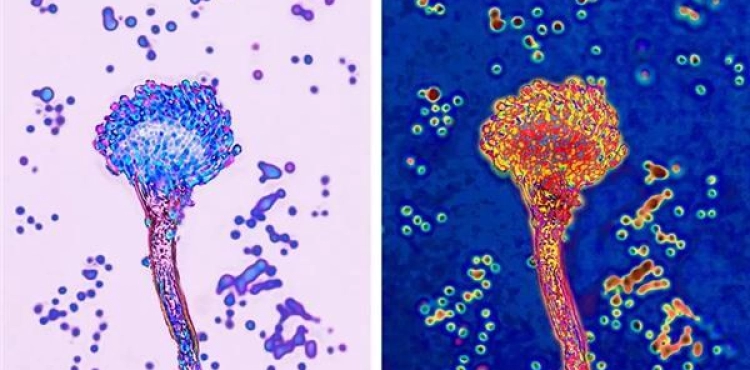The attention given to treating infections caused by fungi around the world is still less than the required level, despite causing many deaths... This danger is growing, especially due to the increasing resistance of these fungi to currently available treatments.
At the National Reference Center for Invasive Fungi and Antifungals at the Pasteur Institute in Paris, the fungus is examined very carefully.
Researchers at the center conduct analyzes of about 800 samples every year, including cultured strains of yeast or filamentous fungi (mold), especially under a microscope, to determine their types and potential resistance to treatments.
“Fungi are everywhere, whether they are visible or not,” says Fanny Lanternier, an infectious disease specialist at Necker Hospital and head of the Reference Center of the Pasteur Institute. On October 4, the institute will launch its annual process to collect donations allocated to finance research projects.
Mycologists believe that there are at least a million species of mushrooms on Earth.
Fungi reproduce by spreading microscopic spores. These germs are often found in the air and soil, and can be inhaled or ingested with food. Some yeasts are also part of microorganisms and are found on the skin and in the digestive system.
Some common fungal infections are generally mild and easy to treat, such as oral thrush, vaginal infections, yeast infections, or skin and scalp yeast infections.
Although the majority of germs found on the skin or inhaled into the lungs have no consequences for healthy people, they are likely to cause severe infections in patients with a weakened immune system.
“It will particularly affect vulnerable patients, including, for example, those with cancer, HIV infection, or those who have undergone organ transplants or heavy surgeries,” says Lanternier.
She points out that recent years have witnessed an increase in some fungal infections, due to the increasing use of immunosuppressive treatments to treat other diseases.
Last year, the World Health Organization published a list of 19 species of fungi that should be studied as a priority, saying they pose a “major threat to public health.”
Among the species that cause particularly problems, according to the World Health Organization, are Cryptococcus neoformans (which can lead in some cases to meningitis), or Candida auris (which can cause infections in various organs, especially Brain) or Aspergillus fumigatus (which may cause lung diseases).
This infection is associated with very high mortality rates, reaching 60% for some.
The spread and geographic range of endemic fungal diseases - once limited to certain regions - is expanding around the world as a result of climate warming and increased travel.
In the spring, the US Health Centers (CDC) warned of an increase in cases of Candida auris fungus, a yeast that is spreading around the world, as its outbreak expanded in health institutions throughout the country.
France is still slightly affected by this problem. However, to prevent the establishment and spread of this yeast in French hospitals, it has been recommended since this summer to conduct an examination of the level of spread of “Candida auris” on patients who are admitted after treatment in hospitals outside the country.
Despite growing concerns, fungal infections receive very little attention and resources, according to the World Health Organization.
It is increasingly common for pathogens to be more resistant to treatments, such as antibiotic-resistant bacteria.
“We use antifungals (drugs) to treat patients, but also in the fields to prevent some fungi from destroying crops,” explains Sarah Delier, a mycologist at Saint-Louis Hospital in Paris and a researcher at the Pasteur Institute.
Over time, “some fungi, such as Aspergillus, become resistant to antifungals, and treatment of patients infected with them becomes more complex,” Delaire said.
This resistance has become particularly apparent in the Netherlands, where large quantities of antifungals have been spread in tulip fields.












